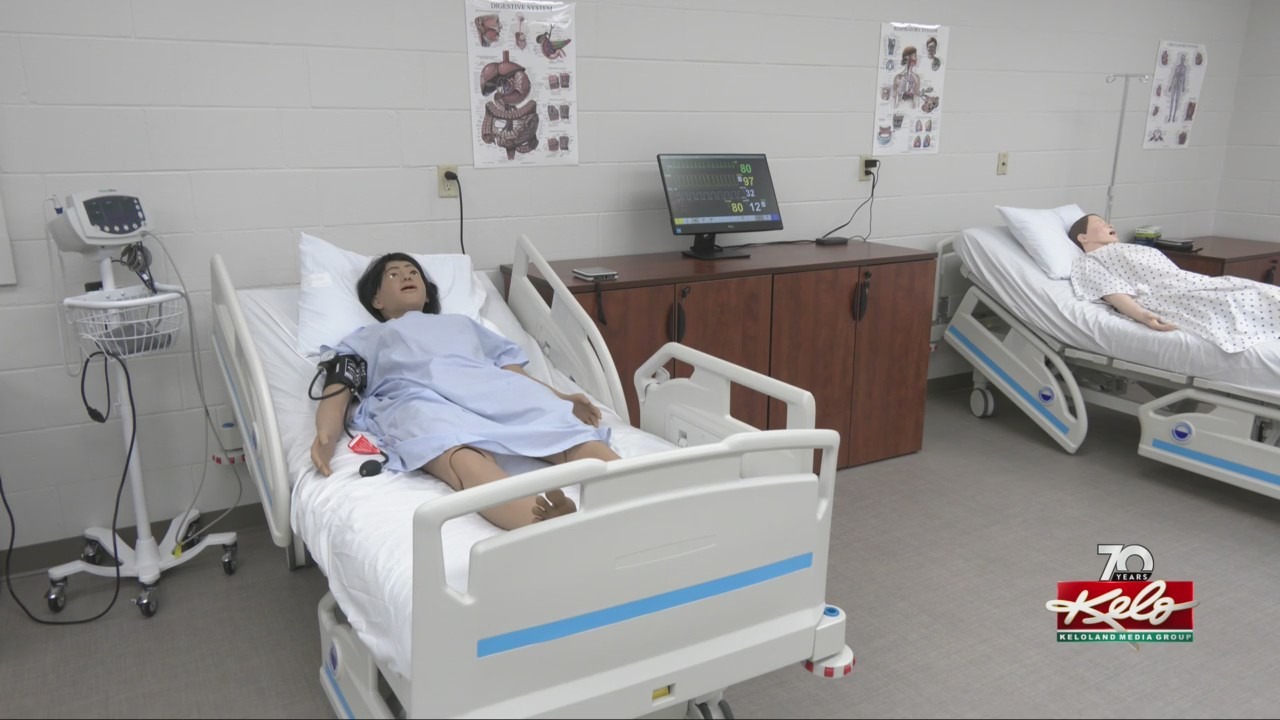
GROTON, S.D. (KELO) — Some new equipment at a high school in northeastern KELOLAND just might get more students interested in the health care field.
Students at Groton Area High School now have a synthetic, plant-based cadaver.
It’s giving junior Emma Kutter a better look at the human body.
“It shows more than diagrams do, like how we usually see diagrams. It shows us more in-depth, basically,” Kutter said.
The cadaver is one of the brand new additions to the classroom.
“They’re able to see underneath the skin, which most students don’t get until they’re in college if they even get that and the university level,” Groton Area health science teacher Brittany Hubbart said.
The district also started off the school year with two new manikins.
The pair of life-like patients can talk and react.
“It’s like a simulation of what a real-life patient can be,” Groton Area junior Ashley Johnson said.
“Students can learn how to take vitals. They can even learn how to insert and change a catheter bag, care for an ostemy bag, all of that kind of stuff,” Hubbart said.
When KEOLOLAND News stopped by the classroom, students practiced how to lift a patient out of bed and into a wheelchair.
“It’s awesome, especially for a small town like us, it’s really cool,” Kutter said.
Some students may end up taking this education into the workforce.
This year, the district launched a gateway to CNA class.
By working with Sun Dial Manor in Bristol, a nursing home and assisted living facility, the class could help students get started on becoming CNAs.
“We have a large need for CNAs. That’s our biggest shortage in the field right now is CNAs. Since we have that shortage we use a lot of traveling CNAs and stuff like that, so it would be really a great opportunity to add additional CNAs and introduce them into the health care field,” Sun Dial Manor administrator Clay Brouwer said.
Brouwer says that could also be a stepping stone for CNAs to explore other careers in health care.
“They can start off as a CNA, but eventually work up to an LPN, RN degree, become a physician. There’s just a number of opportunities, but a lot of times it starts off at the CNA level,” Brouwer said.
“What COVID taught us is not only that we need more health care workers and the importance of health care workers, but also that there’s not enough of them. We see health care worker burnout. We see shortages because of it,” Hubbart said.
But she hopes by introducing this equipment and health-related classes to students, they may become interested in the field.
Kutter is thinking about getting certified as a CNA and working during college.
After that, she’s thinking about becoming a dental hygienist.
“I’ve just always been a helper and loved helping people,” Kutter said.
Now, she’s getting a head-start on what it’s like to help patients.
The district got the equipment thanks to nearly $237,000 thanks to federal grant money for its Health Science program.
The money also provided athletic training tables for the classroom.
